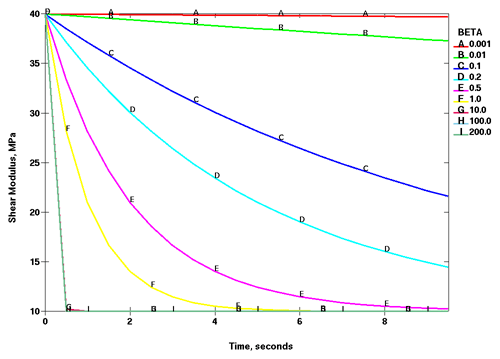LS-DYNA allows several ways to model of stress relaxation often seen in viscoelastic materials when subjected to a sudden constant strain. The methods to model the stress relaxation is briefly discussed here.
1. Curve Input
When using MAT_GENERAL_VISCOELASTIC material model, one can directly input the time log dependence of the relaxation modulus using LCID parameter. The stress relaxation curve can be either from a shear test or a tensile test in which the stress is divided by the initially applied strain. LS-DYNA then internally perfoms a least square fit to determine the prony series coefficients upto N terms. When using the load curve, users can optionally input the initial BETA value (1/time unit) as the BSTART but is not mandatory.
2. Direct Input of Prony Series Coefficients
Optionally, based on the number of terms desired for the Prony series, the relaxation modulus, G, and the exponential coefficient, BETA, for the ith term can be directly input using the Gi and Bi parameters.
Similar techniques can also be used to model relaxation effects for hyperelastic material models which employ a Prony series with upto 6 terms.
Following figure shows the effects of BETA on the transition between the glassy shear modulus (Short Term) of 40Mpa and the rubbery shear modulus (Long Term, Infinite) of 10MPa. You can download the simple ‘C’ program that generates such a curve for demonstration purposes only.















